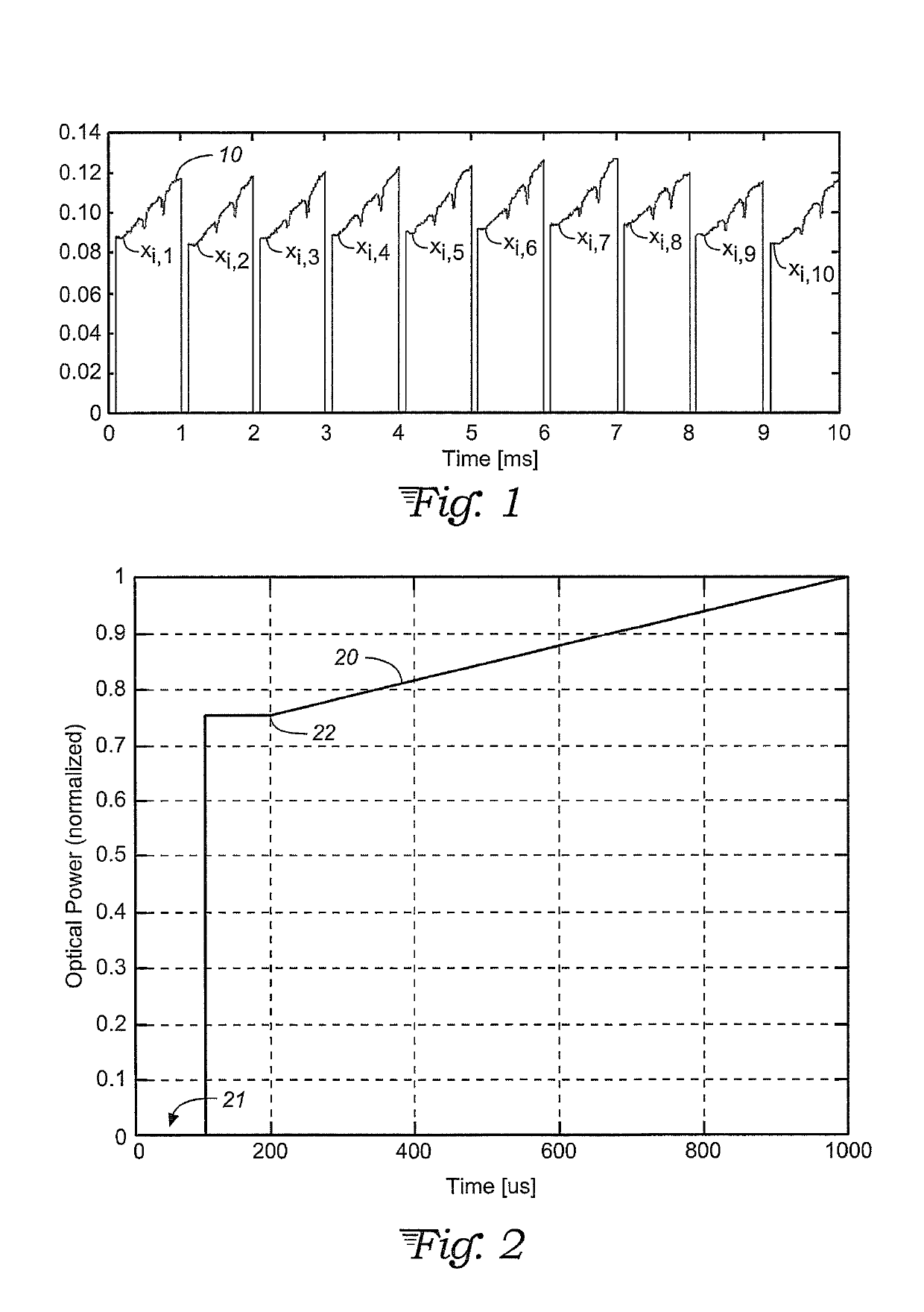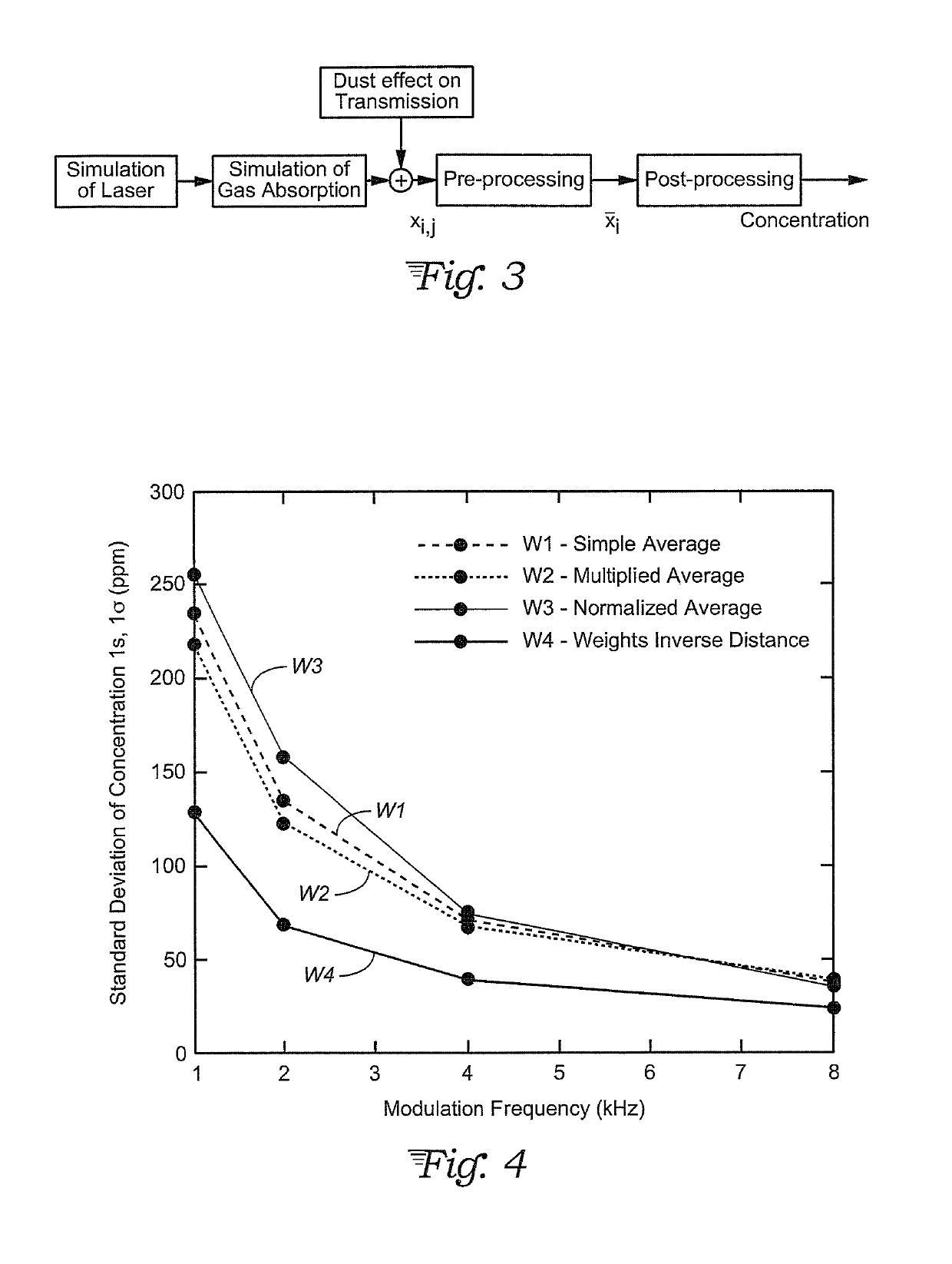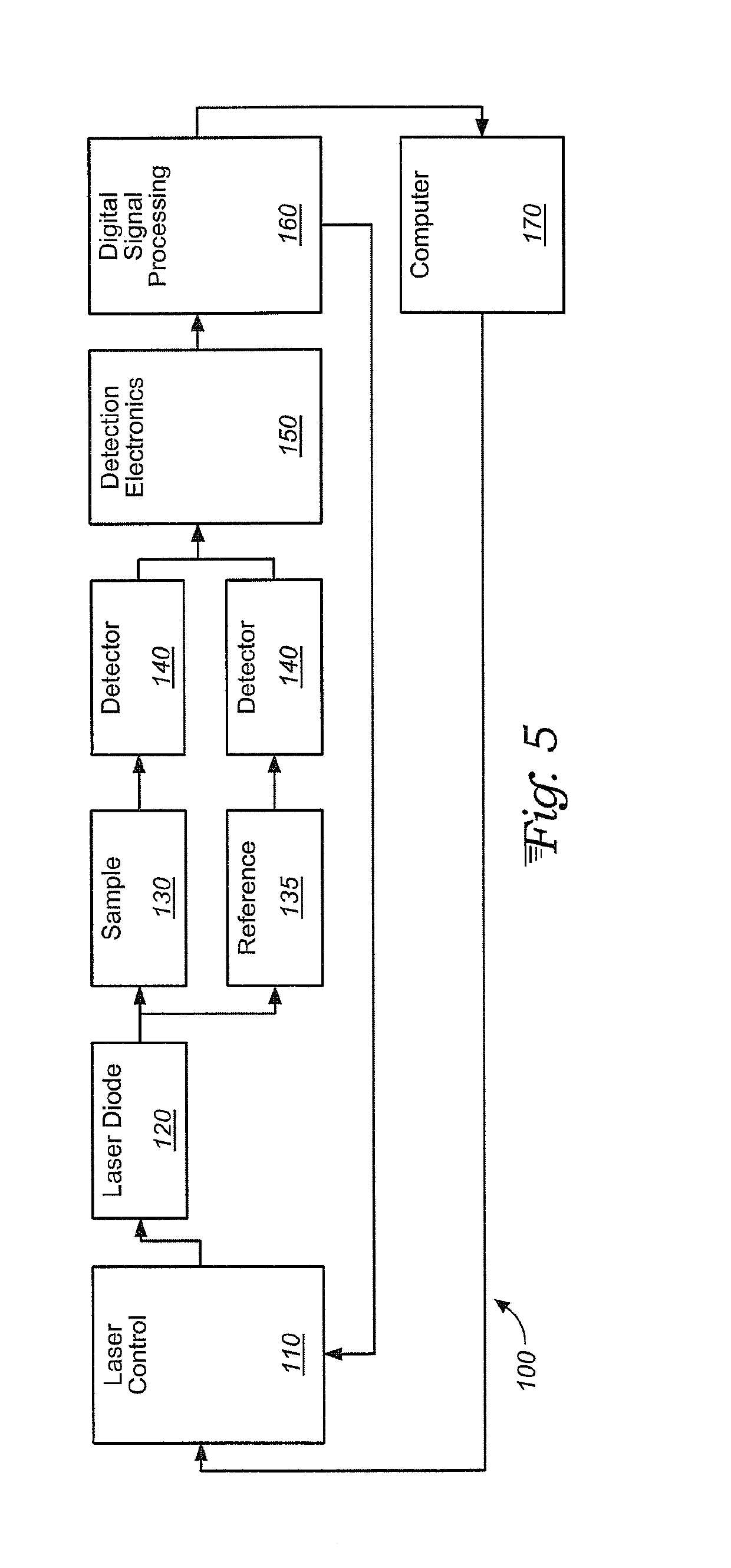Optimal weighted averaging pre-processing schemes for laser absorption spectroscopy
a laser absorption spectroscopy and weighted averaging technology, applied in the field of spectroscopic measurement, can solve the problems of electronic sensor fluctuations, noise in the absorption signal of conventional tunable diode laser absorption spectroscopy (tdlas) systems, and many other spectroscopic measurement systems that experience degradation in performance, so as to improve the performance of sensors, reduce noise, and reduce the effect of measured nois
- Summary
- Abstract
- Description
- Claims
- Application Information
AI Technical Summary
Benefits of technology
Problems solved by technology
Method used
Image
Examples
Embodiment Construction
[0021]A data averaging scheme is presented to optimally process raw spectroscopy data, such as a tunable diode laser absorption spectroscopy (TDLAS) signal when that signal undergoes amplitude variations caused by process flow variations (e.g. dust, density gradients, and other time-varying transmission losses) or by measurement noise. A model is developed which accounts for noise sources from (a) laser intensity fluctuations, (b) process flow variations, and (c) electronic and detection system noise. The model is used to derive an optimal signal-averaging scheme for both noise sources and the generic case combining both noise sources. A weighted average is calculated based on the model parameters and parameters of the measured shot-by-shot TDLAS signal and is used to reduce the measurement noise below that which is achieved using traditional equal-weighted averaging. In this way, the performance (e.g. precision and accuracy) of the TDLAS or other spectroscopic instrument can be enh...
PUM
| Property | Measurement | Unit |
|---|---|---|
| spectroscopic instrument | aaaaa | aaaaa |
| weight | aaaaa | aaaaa |
| weights | aaaaa | aaaaa |
Abstract
Description
Claims
Application Information
 Login to View More
Login to View More - R&D
- Intellectual Property
- Life Sciences
- Materials
- Tech Scout
- Unparalleled Data Quality
- Higher Quality Content
- 60% Fewer Hallucinations
Browse by: Latest US Patents, China's latest patents, Technical Efficacy Thesaurus, Application Domain, Technology Topic, Popular Technical Reports.
© 2025 PatSnap. All rights reserved.Legal|Privacy policy|Modern Slavery Act Transparency Statement|Sitemap|About US| Contact US: help@patsnap.com



